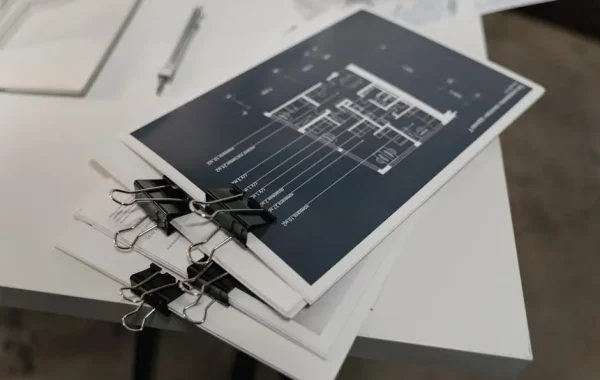
How Will Los Angeles Be Rebuilt After the 2025 Fires?
The wildfires that ravaged Los Angeles County in January 2025 have left an indelible mark on one of the world’s most iconic cities. Over 36,000 acres burned, more than 12,000 buildings destroyed, and at least ten lives tragically lost; the Palisades, Eaton, and Sunset fires have displaced over 130,000 residents and brought the city’s infrastructure to its knees. While Angelenos are reeling from the devastation, focus is already shifting to the massive task ahead, rebuilding Los Angeles.
Rebuilding isn’t just about repairing what was lost. It’s a chance to lay the foundation for a safer, more sustainable, and more resilient future. But how do you rebuild a city that millions call home? We’ll explore the key challenges, opportunities, and strategies shaping Los Angeles’ path to renewal.
Learning from History
History reminds us that cities have emerged stronger after catastrophic disasters. From the Great Fire of London in 1666 to Lisbon’s reconstruction following the 1755 earthquake, urban centers have used tragedy as an opportunity for transformation. These moments of renewal integrated more modern designs, safer infrastructure, and smarter urban planning.
For Los Angeles, drawing on these lessons will be vital. The city must re-evaluate its building codes, urban planning strategies, and environmental safeguards to create a future that reduces the risks of disasters yet to come.
Major Factors Shaping LA’s Reconstruction
- Adapting Building Codes to Prevent Future Fires
One of the most critical steps in rebuilding will be updating building codes to better mitigate wildfire risks. Architects and urban planners must focus on incorporating fire-resistant materials, improved ventilation, and designs tailored specifically to high-risk areas. Landscaping practices, often a factor in fire spread, will likely be restricted near homes and commercial properties.
Although these changes may alter certain aesthetic aspects of Los Angeles, prioritizing safety over design is a crucial trade-off to reduce the chance of another catastrophe.
- Addressing Water Scarcity for Firefighting
Southern California’s longstanding water scarcity played a key role in the fires’ intensity, hindering firefighting efforts. The Palisades Fire, in particular, expanded rapidly due to high winds and insufficient water resources. Moving forward, enhancing access to water for firefighting will be essential. This may include initiatives like:
- Building water storage facilities.
- Installing fire-dedicated water lines.
- Encouraging rainwater harvesting systems in homes.
- Equipping homes with exterior fire sprinklers to suppress flames before firefighters arrive.
- Managing the Massive Scale of Rebuilding
With damages surpassing an estimated $100 billion, the rebuilding effort will test Los Angeles’ resources, workforce, and supply chains to their limits. Demand for skilled labor and construction materials will skyrocket, and bottlenecks in permitting and project approvals could delay progress. State and federal agencies will need to collaborate to streamline these processes and incentivize rebuilding efforts across the region.
- Building Resilience for a Changing Climate
Climate change has intensified the frequency and severity of wildfires in California, and rebuilding Los Angeles offers an opportunity to address this challenge head-on. Resilience must be built into the city’s infrastructure, from adopting renewable energy systems to retrofitting structures to better withstand extreme weather events.
Green building practices, such as using renewable construction materials and incorporating solar panels, can reduce the city’s carbon footprint while helping to mitigate the risk of future disasters. Large-scale investments in renewable energy grids and microgrid systems can also prevent the power outages that often exacerbate emergency situations.
Looking Ahead to a Smarter, Safer Los Angeles
Rebuilding Los Angeles is more than an engineering challenge; it is a societal endeavor requiring collaboration from diverse stakeholders, including government agencies, private companies, community organizations, and residents themselves. The lessons learned from this tragedy could serve as a blueprint for other global cities facing similar risks from natural disasters and climate change.
While the road to recovery will undoubtedly be long and complex, it is also filled with potential. With strategic planning and a commitment to equity, resilience, and sustainability, Los Angeles has an opportunity to emerge stronger, paving the way for a future in which all Angelenos can thrive.
- Tackling Landslide Risks
Beyond fire damage, the fires have exposed large swaths of hillsides in Los Angeles to erosion, leaving them vulnerable to landslides during upcoming rainy seasons. Debris flows and mudslides could worsen the destruction if preventative measures aren’t enacted quickly. Rebuilding plans must include erosion control, retaining walls, and improved drainage systems to stabilize these areas and protect infrastructure.
- Financing the Rebuild
Recreating a city of Los Angeles’ size and scope cannot happen without substantial funding. With initial damage estimates at $60 billion and fast rising, financing will need to come from various sources, including: Insurance payouts, Federal disaster relief grants, State-funded resources, Private-public partnerships, and community-based bonds.
Transparency and accountability will be crucial in ensuring these funds are used efficiently and equitably. Private sector involvement could play a significant role in expediting recovery while easing the strain on public funds.
Reimagining a Better Los Angeles
Rebuilding isn’t just about restoring what was lost, it’s about building something better. This disaster, as devastating as it was, presents an opportunity to rethink Los Angeles’ infrastructure, urban design, and community dynamics for the future.
Smart, Sustainable Urban Design
Post-recovery Los Angeles could lean into smart city solutions to address long-standing challenges like traffic congestion and environmental concerns. This may include:
- Energy-efficient, fire-resistant housing.
- Environmentally friendly public transportation options.
- Solar-powered infrastructure.
- Modernized urban grids to streamline accessibility across neighborhoods.
New construction methods will align with the city’s sustainability goals, ensuring both economic and environmental resilience, combining with an overall fire protection policy.
Strengthening Community Bonds
Amid the rebuild, fostering a sense of unity and purpose among displaced residents and business owners will be vital. Recovery efforts should prioritize:
- Affordable housing programs for affected families.
- Funding to help local businesses reopen.
- Infrastructure to protect the city’s most vulnerable populations.
- A comprehensive, and well planned solution for the homeless
Neighborhood-focused initiatives could not only accelerate recovery but foster a stronger sense of community in Los Angeles.
Preparing for the Next Disaster
Complacency cannot be an option. Post-reconstruction, Los Angeles must prepare for future emergencies. This includes:
- Installing disaster-resilient designs and early-warning systems.
- Training communities in emergency preparedness.
- Maintaining firebreaks and deploying fire-resistant landscaping solutionsthroughout vulnerable areas.
By being proactive, the city can reduce its risk and ensure a faster response the next time disaster strikes.
A Long Road Ahead
Rebuilding a city after a disaster of this magnitude is no small feat, but Los Angeles is no stranger to adversity. The fires of 2025 will undoubtedly stand out as one of the most devastating events in the city’s history. But as with past challenges, this moment will mark a turning point—and an opportunity for transformation and enlightened leadership.
The path to recovery won’t be easy. Some infrastructure and housing projects may take decades to complete. However, by focusing on resilience, sustainability, and community bonds, Los Angeles can emerge stronger than before, setting a model for how cities around the world can respond to environmental challenges.
By rebuilding with purpose and designing a city that meets the needs of residents today and tomorrow, Los Angeles will honor those lost in the tragedy while preparing itself for the future.
—
Author: Robert Ancill, CEO at TNI Group
Visit us at TNI Group for architectural, design, and reconstruction expertise.
#PalisadesFire #UrbanPlanning #SustainableRebuilding



